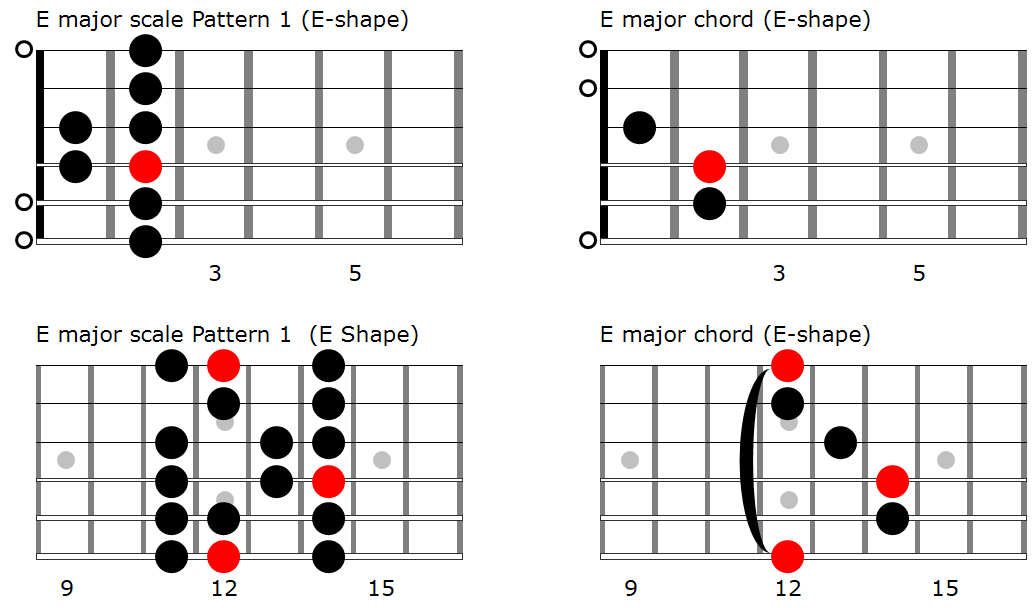@Luc67
See if these help:
And at the open position, below the D-shape full pattern, there exists a partial E-shape pattern.
Note the the full E-shape pattern based around root notes at fret 12 dups down below fret 12 also - notes that are not available in the lower position as you can’t play notes lower than an open string on that string.
But compare them and see how they are the same.
Cheers 
| Richard_close2u | JustinGuitar Official Guide & Moderator





